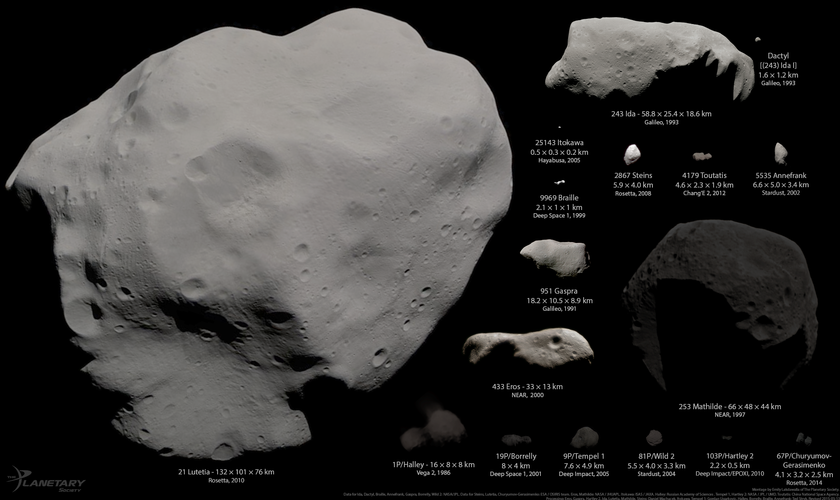
Montage by Emily Lakdawalla. Data from NASA / JPL / JHUAPL / UMD / JAXA / ESA / OSIRIS team / Russian Academy of Sciences / China National Space Agency. Processed by Emily Lakdawalla, Daniel Machacek, Ted Stryk, Gordan Ugarkovic.
 Copyright © Michael Richmond.
This work is licensed under a Creative Commons License.
Copyright © Michael Richmond.
This work is licensed under a Creative Commons License.
The simplest way to measure the size and shape of an asteroid is to get close and take pictures. Simple -- in theory. In practice, of course, sending a spacecraft hundreds of millions of miles through space so that it ends up in exactly the same place as an asteroid is not really so easy. Nor is it cheap: the Dawn mission to asteroids Ceres and Vesta took over a decade in flight (and more on the ground) and cost roughly $446 million. That's, well, that's over $200 million per asteroid.
On the bright side, spacecraft can tell us not only the size and shape, but also many details about the surface properties, craters, chemical composition, etc. Just look at all the information in the pictures below -- and click on the picture for a full-sized version.

Montage by Emily Lakdawalla. Data from NASA / JPL / JHUAPL / UMD / JAXA / ESA / OSIRIS team / Russian Academy of Sciences / China National Space Agency. Processed by Emily Lakdawalla, Daniel Machacek, Ted Stryk, Gordan Ugarkovic.
One method we can use from the Earth involves measuring the brightness of an asteroid in both the visible and infrared portions of the spectrum.
If we can measure both the optical and infrared, at several different wavlengths in each region, and if we can make measurements over many months, as we see the asteroid from different angles relative to the Sun, and if we make a series of assumptions about the material properties and shape of the asteroid, then it is possible to derive the size of the body.
The NEOWISE project, which uses the WISE satellite in orbit around the Earth to acquire infrared measurements of objects in space, has allowed astronomers to apply this method to THOUSANDS of asteroids. Excellent!
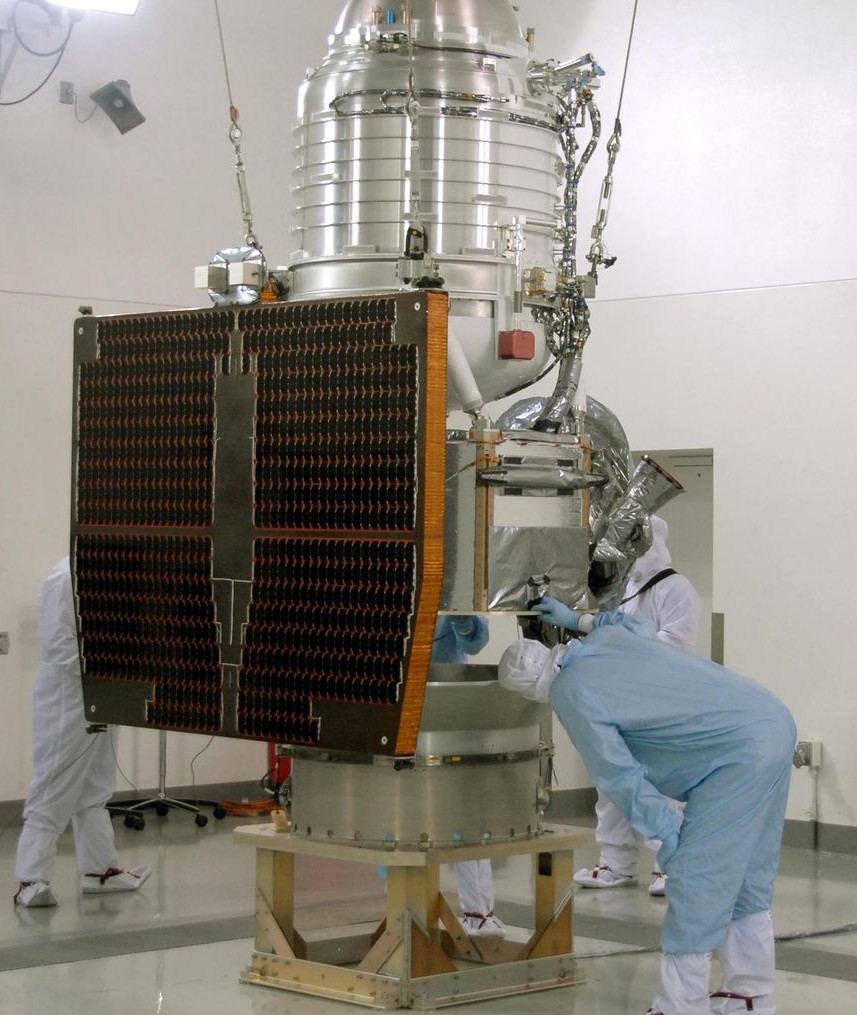
Image of WISE spacecraft before launch, courtesy of
NASA and JPL.
However, the results are only as good as some of the assumptions made in our models of the infrared and visible properties of the surface. In addition, the uncertainties tend to be ... sort of large. Take a look at the diameters in the table below. These aren't "one-percent" results; the typical uncertainties are 20 to 40 percent.
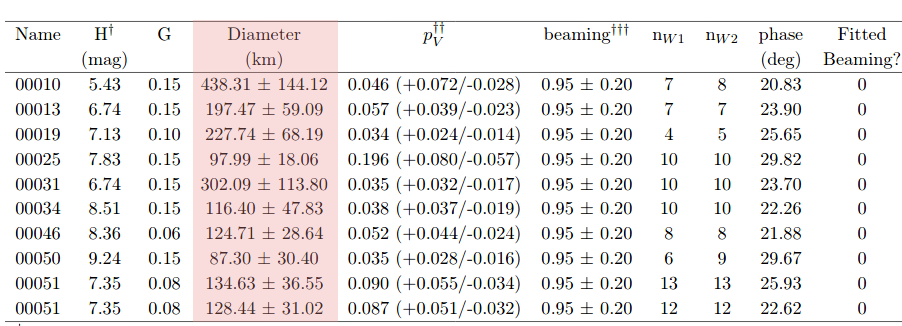
Table 2 taken from
Asteroid Diameters and Albedos from NEOWISE Reactivation Mission Years 4 and 5
by Masiero et al., The Planetary Science Journal, volume 1 (March 2020)
Look anywhere in the sky, and one can see hundreds and thousands of stars.
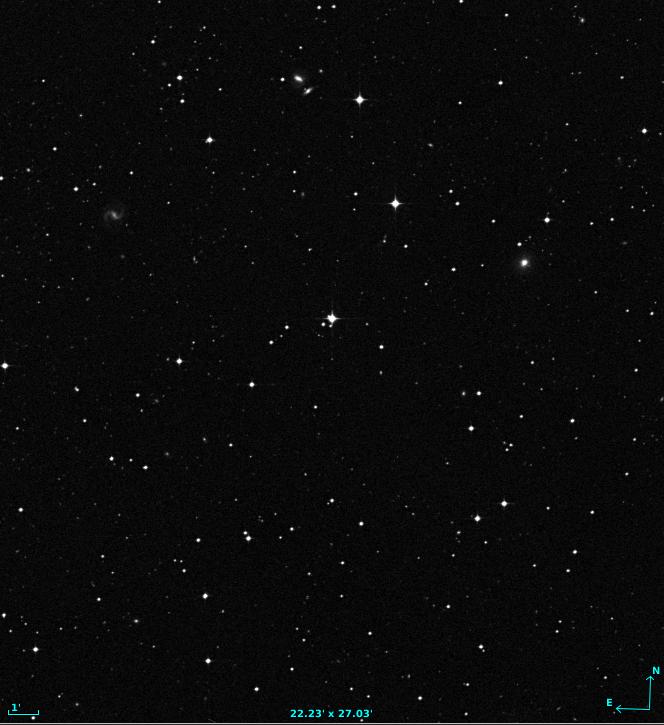
In a region of the sky called the ecliptic, one will occasionally find asteroids slowly sliding across the starfield.
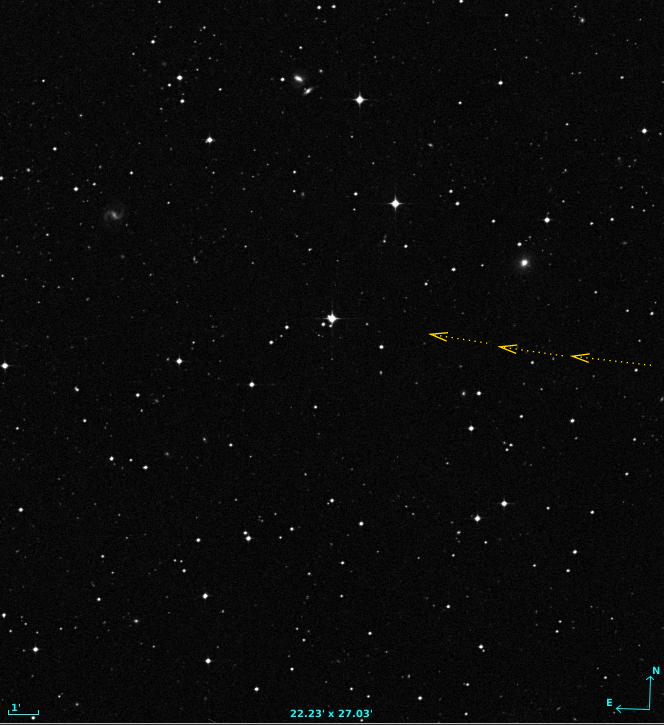
Most of the time, the asteroids slip in between the stars. But every now and then, an asteroid's path will just happen to take it right in front of a star.
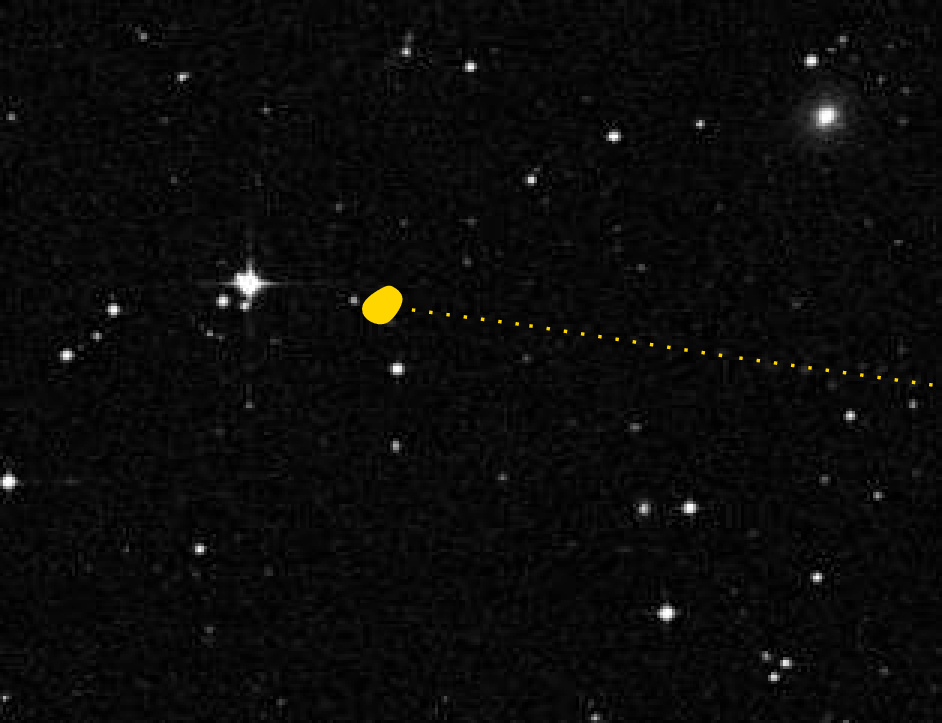
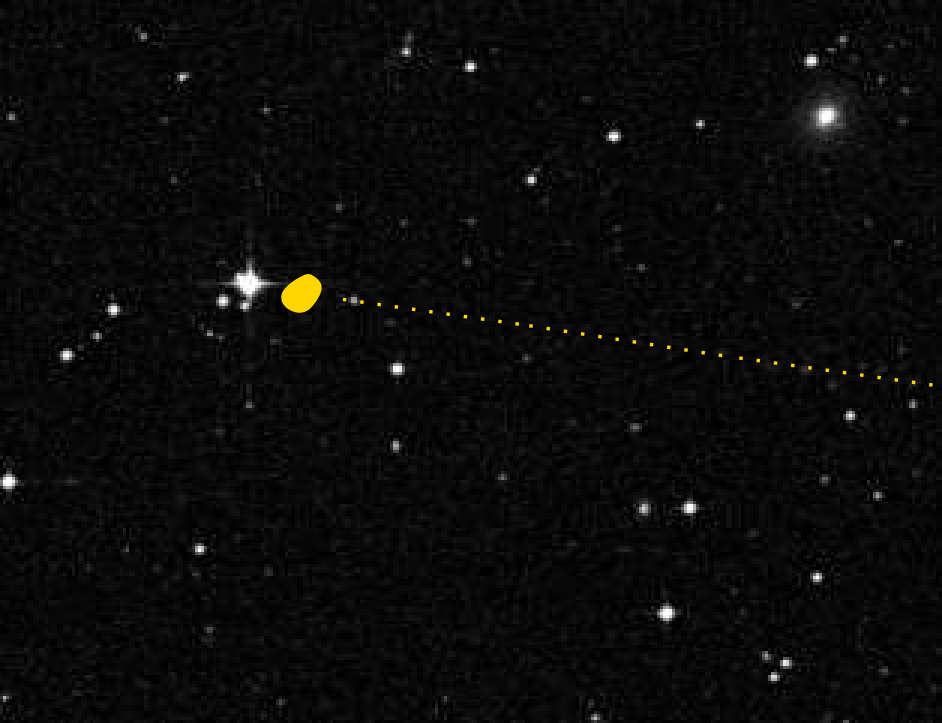
For just a second or two, the asteroid's rocky body will completely block the light from the star, causing it to disappear.
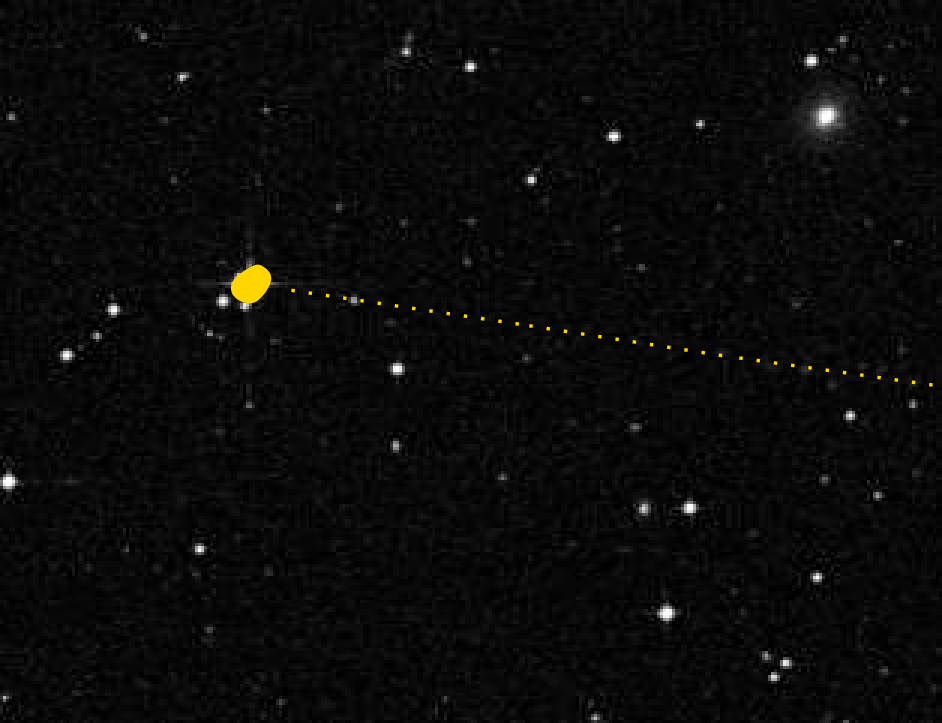 Then, as the asteroid continues in its orbit,
it will uncover the star, and we'll see the starlight again.
Then, as the asteroid continues in its orbit,
it will uncover the star, and we'll see the starlight again.
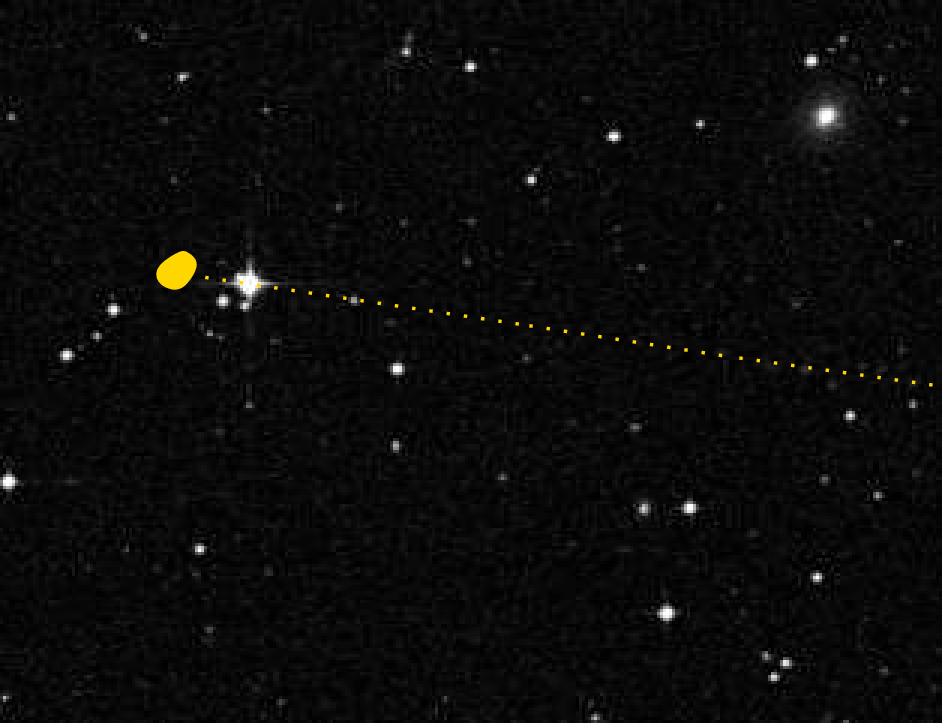
A small asteroid will block the starlight for a very short period of time; but a large asteroid may block the light for 5 or 10 seconds.
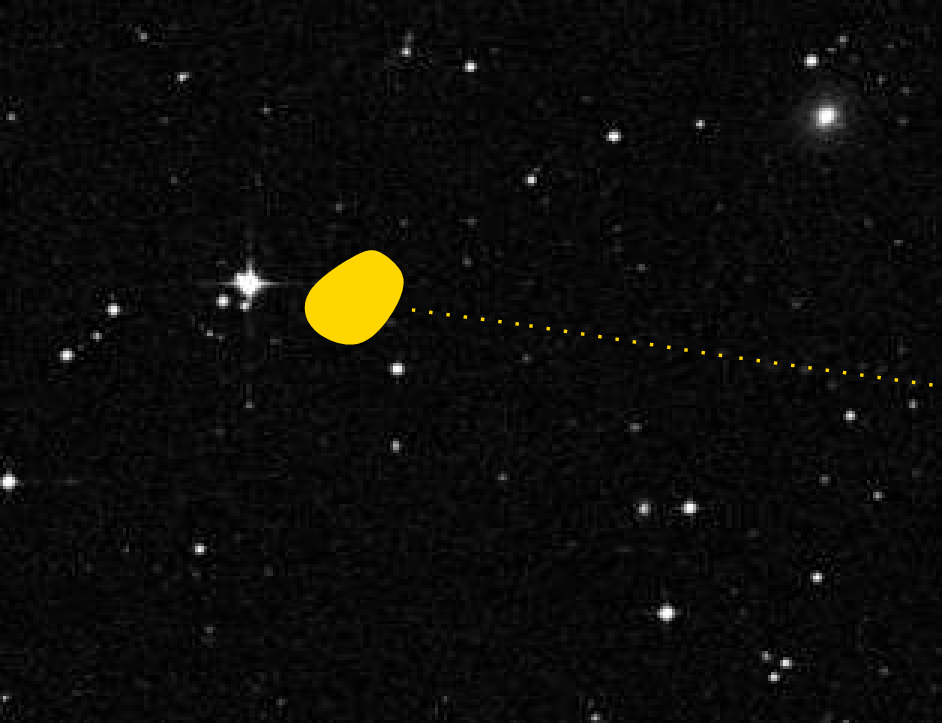
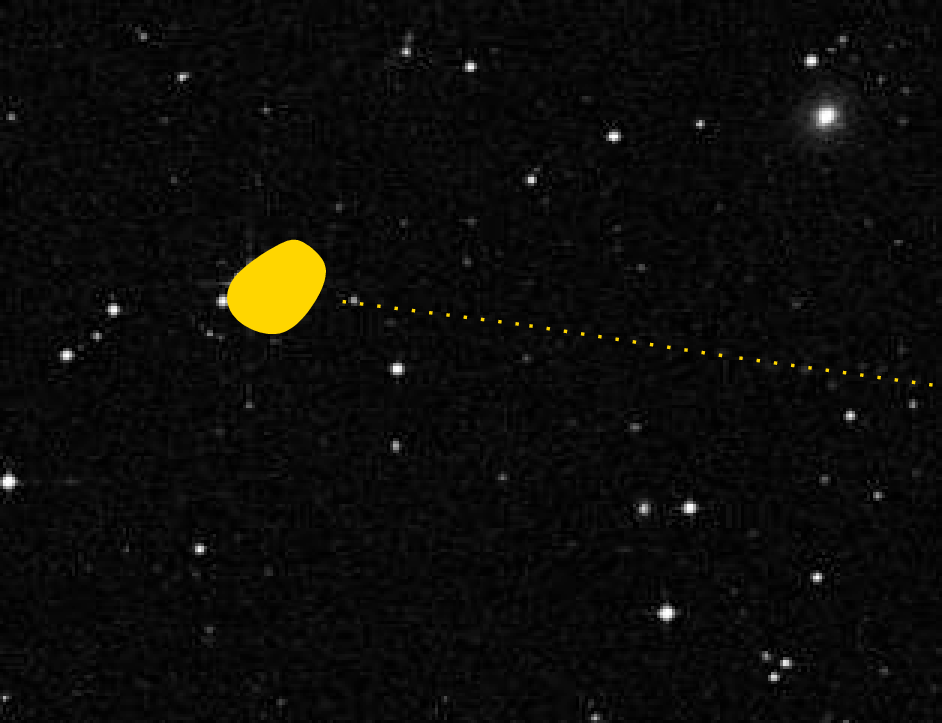
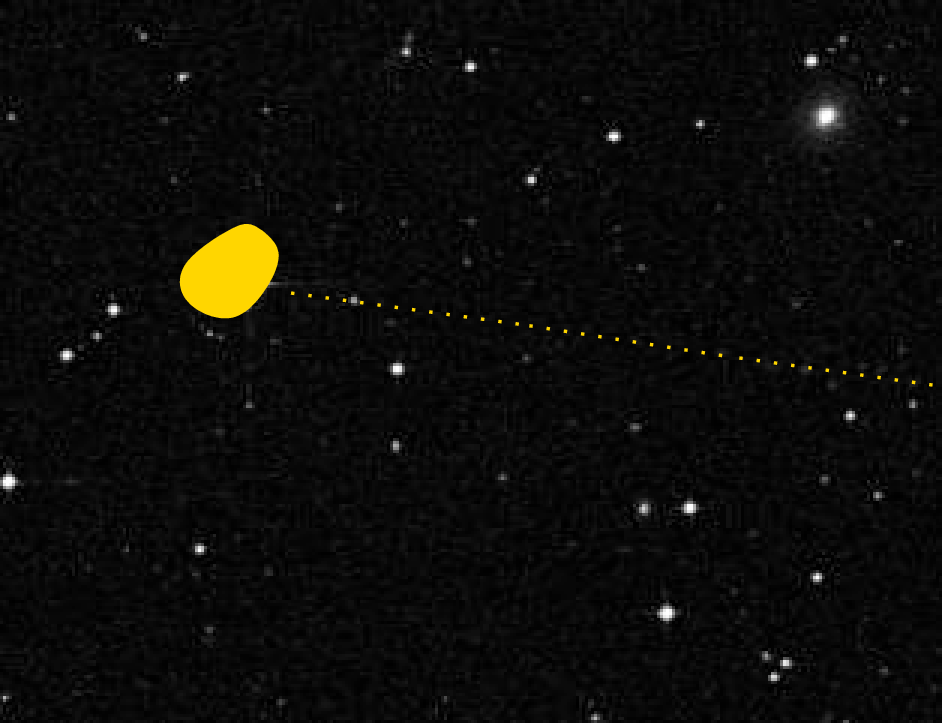
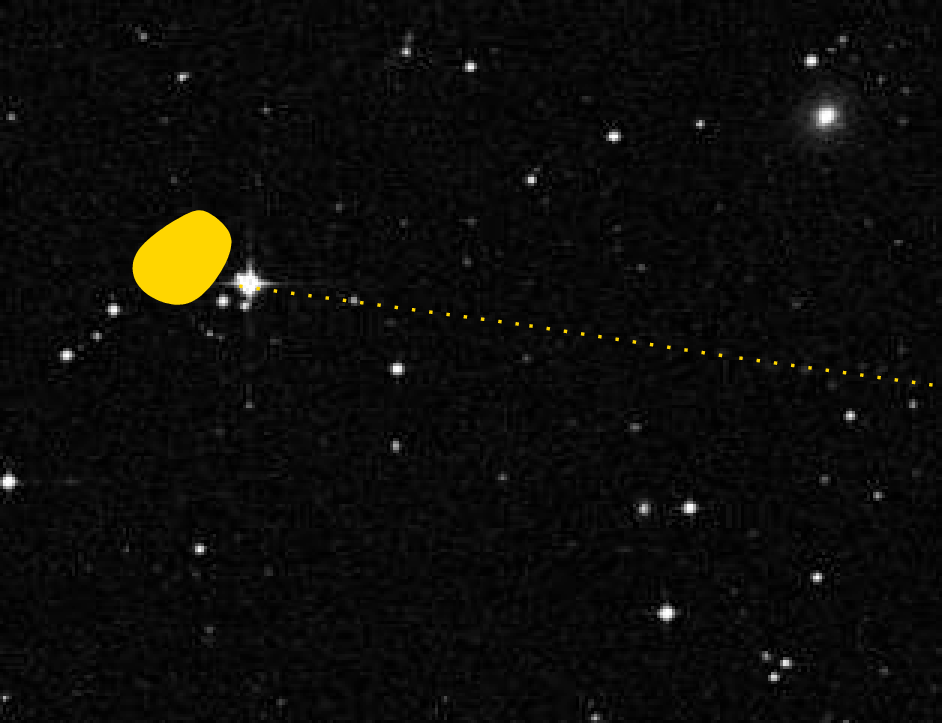
In fact, there is a simple relationship between the time t for which the starlight is blocked, the size D of the asteroid, and the velocity v of the asteroid in its orbit.

Astronomers have been studying most asteroids for many years, so we have very, very good measurements of the speed v of each one in its orbit around the Sun. What that means is that IF we happen to be lucky enough to be watching a star carefully, at just the right time when an asteroid passes in front of it, and we measure precisely the duration t of the occultation, then we can compute the size of the asteroid via

"But," one might object, "what are the chances that astronomers will just happen to be watching the right star at the right time?" Well, those chances would be small .... unless some nice scientists made up a list of such occultation events in advance.
For example, back in February of 2020, the prediction site included one event in which the asteroid Thyra would pass in front of a star on the night of February 18. As it did, it would cast a shadow on some portions of the Earth; and, as the asteroid moved, that shadow would slide over the Earth's surface. In this particular case, the shadow's track moved across the southern sections of the United States:
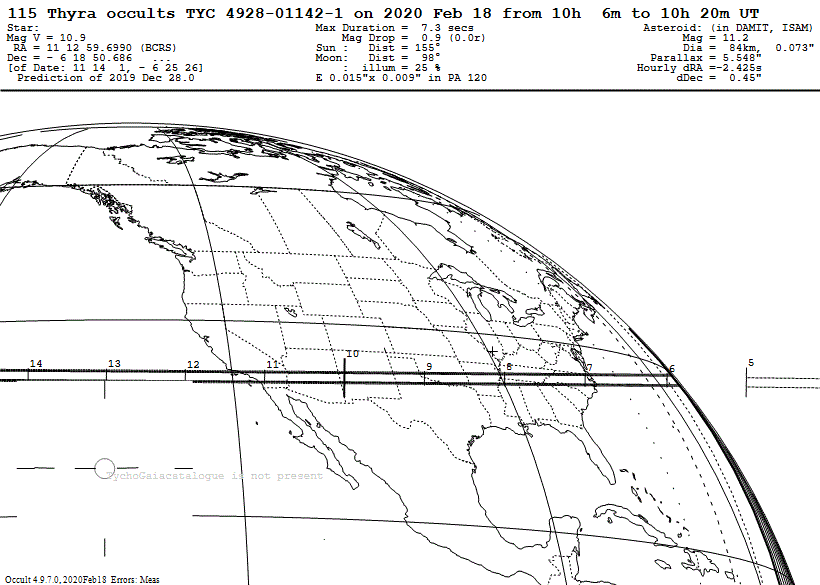
Image courtesy of the awesome
asteroidoccultations.com site
A bunch of astronomers drove out to locations along this path, bringing with them telescopes and cameras and timing equipment.
Image courtesy of
asteroidoccultations.com
Each one watched to see if the star disappeared -- and, if so, for how long. It turned out that some locations measured a dip lasting 5 seconds, but others only 3 seconds, or 1 second, or, in a few cases, no dip at all. And that range of durations turns out to give us the range of cross-section diameters that each observer sampled. By putting all the information together, we can make a 2-D silhouette of the asteroid!
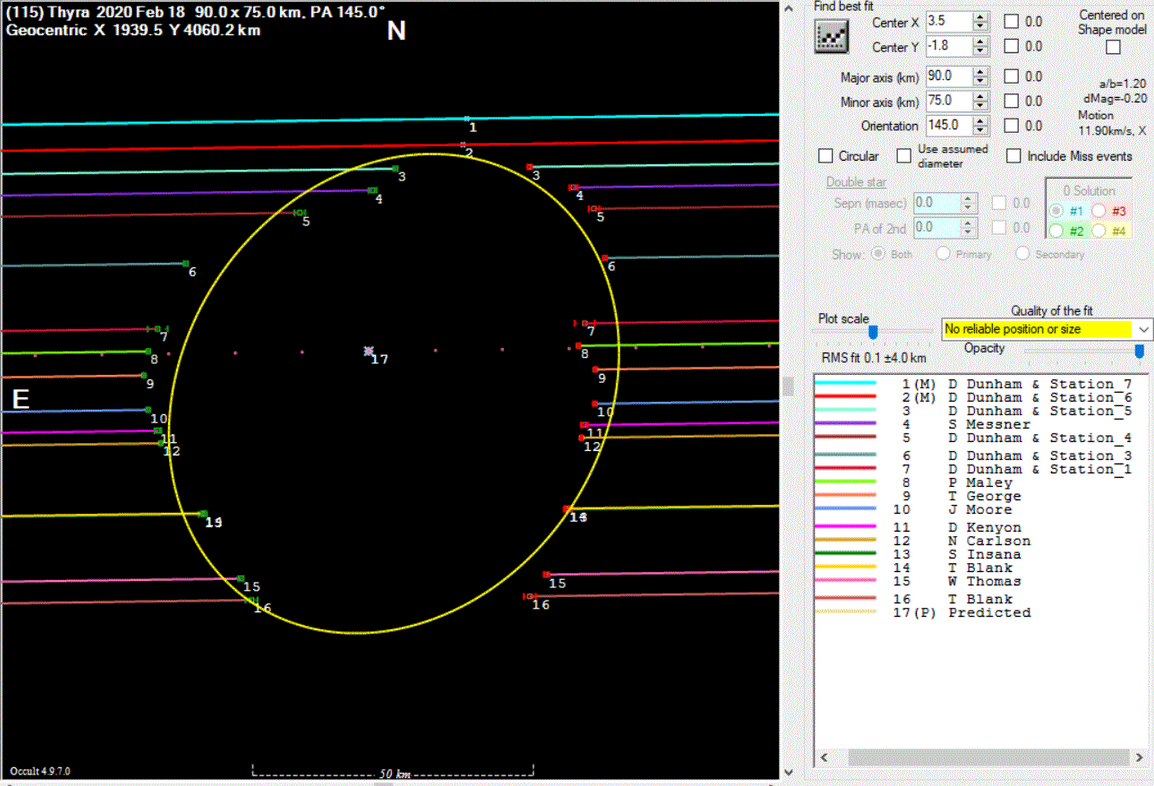
Image courtesy of
asteroidoccultations.com
With careful preparation and careful measurements, amateur (and professional) astronomers on the Earth's surface can use small telescopes to measure the size and shape of asteroids. It's cheap, but very effective!
Early on the morning of July 14, 2020, at about 3:40 AM EDT, the asteroid known as (256) Anna was predicted to pass in front of star known as TYC 1188-651-1. The path of its shadow across the Earth was somewhat unusual: it moved from south to north along the Atlantic Coast of North America:
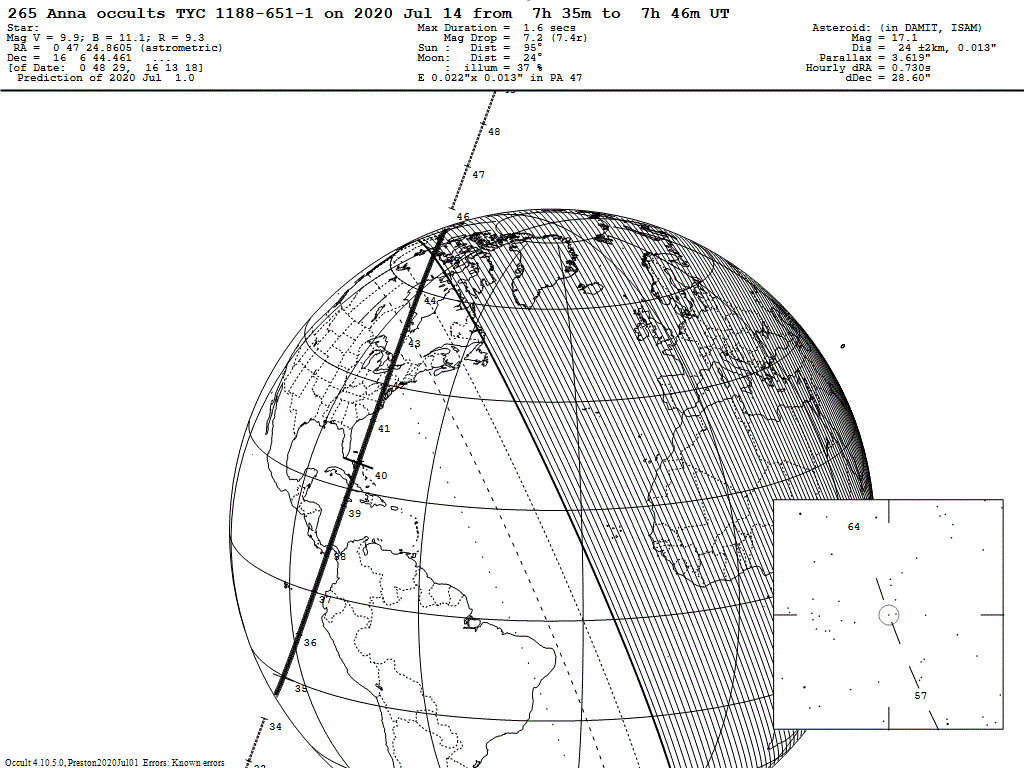
Image courtesy of
asteroidoccultations.com
Now, the predicted path passed slightly to the west of the Rochester area. In the map below, the green line marks the center of the predicted path, and the red lies the eastern and western limits of the estimated range of the edges. The RIT Observatory, in Henrietta, lies about 20 km outside the eastern limit.

Image courtesy of
Derek Breit's interactive occultation map site
Still, I decided to give it a try. So, I headed out to the observatory at 2 AM on Tuesday morning, pointed one of our telescopes at the target star, and focused its light onto a video camera. I was able to see the target star (at the center of the chart below) clearly; just to its right was a second star of similar brightness.
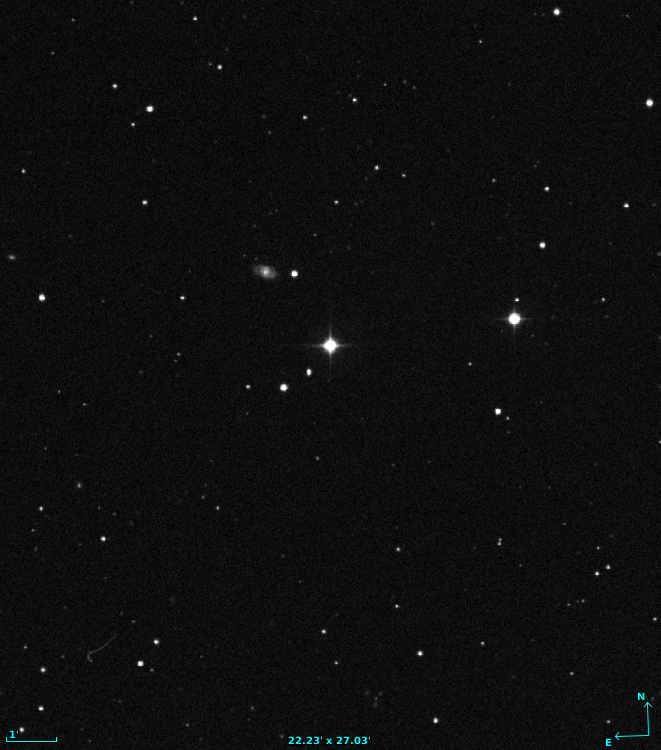
I turned on the shortwave radio to the WWV time signal station and listened as it called out the time.
tick ... tick ... tick ... At the tone, the time will be 7 hours 41 minutes, Coordinated Universal Time ... ... BEEP ... tick ... tick ... tick ... tick
I watched from 03:40:00 to 03:43:00, about one minute before and after the predicted time, but the star never changed in brightness.
Rats.
Still, I sent in my official report of the non-event to the IOTA office; perhaps it will serve to help define the edge of the asteroid's limb.
Better luck next time, I hope!
 Copyright © Michael Richmond.
This work is licensed under a Creative Commons License.
Copyright © Michael Richmond.
This work is licensed under a Creative Commons License.